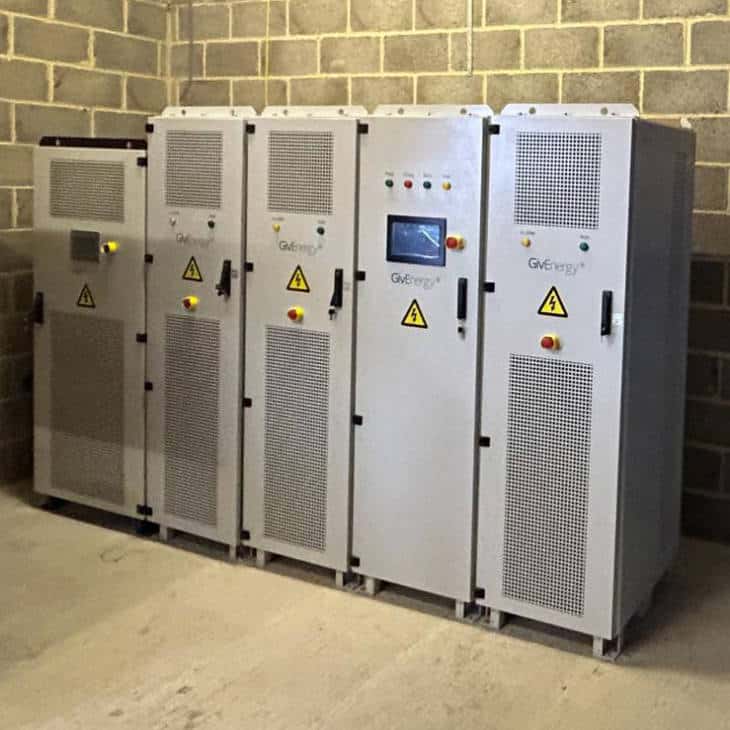PAT Testing in Teesdale & County Durham
Keep your workplace or rental property safe and compliant with professional Portable Appliance Testing. Our qualified electricians test electrical equipment across Teesdale and County Durham, providing clear certification and honest advice about your safety obligations. Whether you’re a business owner, landlord, or organisation, we’ll ensure your portable appliances meet current safety standards.
We’re not a testing-only company – we’re fully qualified electricians who understand electrical systems thoroughly. If we identify faults, we can often repair them on the spot or advise on proper remediation. You’re getting genuine electrical expertise, not just someone running equipment through a tester.
We’ll never recommend unnecessary testing or create problems that don’t exist to generate more work. Our advice is based on actual risk assessment and legal requirements, not scare tactics or box-ticking. If your testing intervals can be extended safely, we’ll tell you. If you need more frequent testing, we’ll explain why.
We’ve been serving Teesdale and County Durham since 2010. We maintain client records, track testing schedules, and provide reminder services so you never miss a testing due date. When you call, you’re speaking to the same team who know your premises and genuinely care about keeping your workplace safe and compliant.

What is PAT Testing?
PAT testing – Portable Appliance Testing – is the examination of electrical appliances and equipment to ensure they’re safe to use. Despite the name, it’s not just about portable items. The testing covers anything that plugs into a mains socket, from kettles and computers to floor-standing equipment like fridges and photocopiers.
The process involves visual inspection and electrical testing using specialist equipment. We check for damaged cables, loose connections, exposed wires, and other obvious faults. Then we use PAT testing equipment to measure electrical values like earth continuity, insulation resistance, and polarity. These tests identify faults that aren’t visible to the naked eye but could cause electric shocks, fires, or equipment damage.
Each item that passes testing receives a unique identification label showing the test date and when it’s next due for testing. You’ll also receive detailed records of all items tested, their pass or fail status, and any faults identified. These records are crucial for demonstrating compliance if you’re ever inspected by health and safety authorities or insurers.
PAT testing isn’t just about ticking boxes – it’s about preventing accidents. Faulty electrical equipment causes fires, electric shocks, and injuries every year. Regular testing identifies problems before they become dangerous.
Who Needs PAT Testing?
If you’re an employer, landlord, or run any kind of business or organisation, you have legal responsibilities under the Electricity at Work Regulations 1989 to maintain electrical equipment in a safe condition. PAT testing is the primary way most businesses and landlords demonstrate they’re meeting this obligation.
Businesses and Employers: Any business using electrical equipment needs regular PAT testing. This includes offices, shops, cafes, restaurants, hotels, workshops, factories, care homes, and any other commercial premises. The Health and Safety Executive expects employers to maintain equipment safely, and whilst PAT testing isn’t explicitly mandated by name, it’s the recognised method for demonstrating compliance.
Landlords: If you rent out residential properties, you’re responsible for the safety of electrical appliances you provide with the property. This typically includes items like fridges, washing machines, kettles, and TVs in furnished or part-furnished rentals. Regular PAT testing protects both your tenants and your legal position.
Schools, Colleges, and Universities: Educational institutions have particular responsibility for student and staff safety. Equipment used in classrooms, workshops, IT suites, and staff rooms all needs regular testing.
Charities and Community Organisations: Village halls, community centres, churches, sports clubs, and charitable organisations all use electrical equipment and have responsibilities towards volunteers, employees, and members of the public using their facilities.
Self-Employed and Home Workers: If you employ people who work from home or you provide equipment for them to use, that equipment needs testing too. Your responsibility extends beyond your physical premises.

How Often Should PAT Testing Be Done?
There’s no universal answer – testing frequency depends on the type of equipment, how it’s used, and the environment it’s used in. Risk assessment determines appropriate intervals.
The Health and Safety Executive provides guidance based on equipment type and usage:
For landlords, annual PAT testing of provided appliances is common practice and typically required by insurance policies.
We’ll assess your specific situation during our initial visit and recommend appropriate testing intervals based on your equipment types, usage patterns, and risk factors. We can also set up reminder systems so you never miss a testing due date.

The PAT Testing Process
Our PAT testing service is straightforward and causes minimal disruption to your business or property.
We’ll arrange a convenient time to visit your premises – this can often be outside normal working hours if you prefer. We bring all necessary testing equipment and can usually work around your daily operations.
For each item, we start with a visual inspection, checking cables for damage, plugs for cracks or signs of overheating, and the appliance itself for any obvious defects. Many faults are spotted at this stage before we even connect testing equipment.
Next, we use our PAT testing equipment to measure electrical safety parameters. The equipment runs a series of automated tests checking earth continuity (ensuring the safety earth connection works properly), insulation resistance (checking no current is leaking where it shouldn’t), and earth leakage (detecting any current flow that could cause electric shocks).
Items that pass receive a uniquely numbered label showing the test date and next test due date. Failed items are clearly marked, and we’ll discuss the faults with you. Sometimes faults are easily remedied – a damaged plug can be replaced, for instance – whilst other times equipment needs professional repair or replacement.
You’ll receive comprehensive records listing every item tested, its location, pass/fail status, and any faults identified. These records should be kept for the lifetime of the equipment plus a reasonable period afterwards. They’re your evidence of compliance if you’re ever inspected or investigated following an incident.
Step-by-Step Testing Process
Failed Items and Remedial Work
When equipment fails PAT testing, we’ll explain exactly what the fault is and what your options are.
Minor Faults: Sometimes issues are simple and can be fixed on the spot – replacing a damaged plug, tightening loose connections, or fitting a new fuse. We carry basic parts and can often resolve these immediately.
Repairable Faults: More serious issues like damaged cable cores or internal faults might be repairable, but the equipment needs proper attention from a qualified electrician or appliance repairer. We’ll advise whether repair is cost-effective compared to replacement.
Dangerous Faults: Some equipment is simply too dangerous to continue using and should be taken out of service immediately. We’ll label these items clearly and recommend immediate replacement. This typically applies to equipment with severely damaged cables, significant internal damage, or multiple faults.
Failed equipment should be removed from service until repaired or replaced. Continuing to use equipment you know has failed safety testing creates serious liability issues if someone is injured.
We’re qualified electricians, so for many faults we can carry out repairs or arrange them for you. However, sometimes replacement is more cost-effective than repair, particularly for cheaper items like kettles or desk lamps. We’ll give you honest advice about what makes sense.

Testimonials
In my 90th year and almost housebound I find that I have to rely more heavily on family, friends and a wide variety of firms and organisations. I have used Teesdale Renewables for many years for plumbing, heating and lighting issues. The office staff and workforce have been unfailingly efficient, helpfuland friendly over that time.Very recently I had a new central heating boiler installed and replacement lights fitted in the porch and under kitchen cupboards. The boiler change was completed within the day causing minimum disruption to the normal function of the house in respect of water and gas supplies and is proving to be very efficient and effective. The lights were installed in a few hours and are superb.I would never think of going anywhere else for the services provided by Teesdale Renewables so effectively and at reasonable cost.
Thank you for the excellent service from staff member of the electrician team- he was very capable, experienced and well mannered. I will definitely be using your services again.
Thanks for the invoice for the installation of our wood burning stove. We are delighted with the stove and with the work undertaken.
Record Keeping and Compliance
Proper record keeping is essential for demonstrating compliance with electrical safety regulations. Simply having equipment tested isn’t enough – you need to prove it was tested and keep records accessible.
After every testing visit, you’ll receive detailed records showing:
- A complete inventory of all items tested
- Unique identification numbers for each item
- Test results (pass/fail)
- Any faults identified
- Next test due dates
- Testing date and engineer details
These records should be kept for the lifetime of the equipment. If you’re inspected by the Health and Safety Executive, insurers, or other authorities, these records demonstrate you’re taking electrical safety seriously and meeting your legal obligations.
We can provide records in paper format, digital spreadsheets, or both – whatever works best for your organisation. For clients with large numbers of items, we use barcode systems that make future testing faster and ensure accurate record keeping.
Many organisations keep a master register of all electrical equipment with testing dates, locations, and status. We can help you set this up and maintain it through regular testing visits.
If you’re a landlord with multiple properties, we can maintain separate records for each property, making it easy to track testing across your portfolio.


Insurance and Legal Protection
Many insurance policies require regular PAT testing as a condition of cover. If you have a fire or accident involving electrical equipment and you can’t demonstrate the equipment was properly maintained and tested, your insurer might refuse your claim.
From a legal perspective, if an employee, tenant, customer, or member of the public is injured by faulty electrical equipment, you could face prosecution under health and safety legislation. Fines can be substantial, and in serious cases, individuals can face criminal charges. Having comprehensive PAT testing records demonstrates you took reasonable steps to prevent the incident.
For landlords specifically, tenant safety is increasingly in the spotlight. Following high-profile cases involving electrical fires in rental properties, there’s growing expectation that landlords will maintain electrical appliances properly. PAT testing records show you’re taking tenant safety seriously.
The cost of PAT testing is minimal compared to the potential costs of accidents, insurance claims, legal fees, or health and safety prosecutions. It’s a straightforward, cost-effective way to protect yourself, your business, your employees, and the public.
PAT Testing Questions Answered
Is PAT testing a legal requirement?
PAT testing itself isn’t explicitly required by law, but the Electricity at Work Regulations 1989 require you to maintain electrical equipment in a safe condition. PAT testing is the recognised method for demonstrating compliance with this obligation. If you’re inspected and can’t show how you’re maintaining electrical safety, you’d struggle to demonstrate compliance without PAT testing records. Many insurance policies also require regular testing. So whilst it’s not technically mandatory, it’s effectively necessary for any business, landlord, or organisation using electrical equipment.
How long does PAT testing take?
This depends on the number of items and their accessibility. As a rough guide, an experienced tester can check 100-150 straightforward items per day – that’s office equipment, kettles, computers, and similar appliances. More complex equipment or items in difficult locations take longer. We’ll provide an estimate based on your specific situation during the initial consultation. For most small to medium businesses, testing can be completed in a morning or afternoon without significant disruption.
Can I do PAT testing myself?
Technically, yes – there’s no legal requirement for PAT testing to be carried out by a qualified electrician, provided the person doing it is competent and uses proper equipment. However, “competent” means understanding electrical safety, knowing how to use testing equipment correctly, and being able to interpret results. Most businesses find it more practical and reliable to use professional testers. The cost is modest compared to the time investment in training staff, purchasing equipment, and maintaining records. Professional testing also carries more weight with insurers and inspectors.
What happens if I don’t have PAT testing done?
You’re potentially breaching your legal obligations under the Electricity at Work Regulations. If there’s an accident involving electrical equipment, you could face health and safety prosecution, fines, and potential criminal charges in serious cases. Your insurance might refuse claims related to electrical incidents. If you’re a landlord, you’re potentially failing in your duty of care to tenants. The risks far outweigh the modest cost of regular testing. It’s not worth gambling with people’s safety or your legal position.
Do I need to test equipment that’s rarely used?
Yes. Equipment that sits idle can develop faults – insulation can deteriorate, moisture can get into connections, and cables can be damaged by pests or environmental factors. Equipment that’s used infrequently might actually need testing more often than daily-use items because problems aren’t spotted through regular use. We’ll assess your specific situation and recommend appropriate testing intervals, but simply because something isn’t used regularly doesn’t mean it’s safe or exempt from testing requirements.
What’s the difference between PAT testing and fixed wire testing?
PAT testing covers portable electrical equipment – anything that plugs in. Fixed wire testing (sometimes called periodic inspection or EICR – Electrical Installation Condition Report) examines the permanent electrical installation in your property – the wiring, consumer units, sockets, and fixed lighting circuits. Both are important for complete electrical safety. Most businesses need both – PAT testing for equipment and periodic fixed wire testing for the building’s electrical installation. We offer both services and can advise on what your property needs.
Request My Consultation Today
Our straightforward installation process is designed to make your transition to solar energy as smooth as possible:




